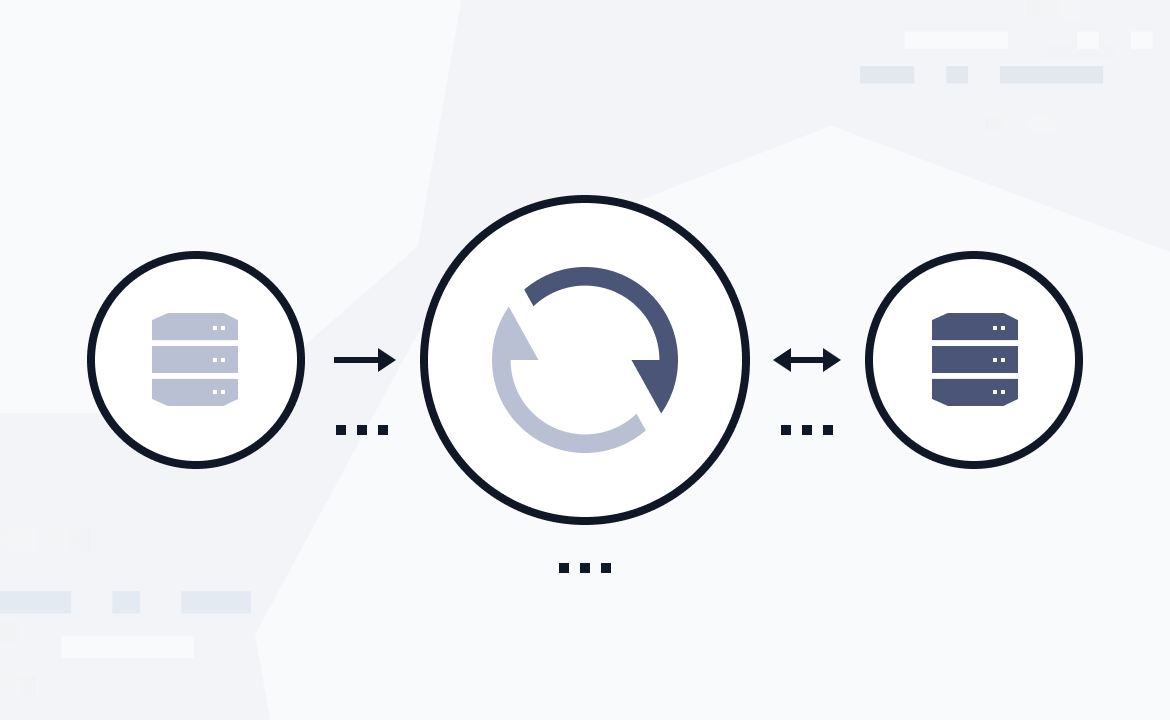Leveraging CDC for Efficient Data Ingestion in Apache Kafka
 tomiwa
tomiwa
Introduction
Apache Kafka has emerged as a leading platform for data streaming and processing, allowing organizations to harness real-time data for critical insights and decision-making. However, the success of Kafka heavily relies on the efficient and reliable ingestion of data from various sources. Change Data Capture (CDC) plays a pivotal role in this process, enabling organizations to capture and track changes in databases and replicate them in Kafka. This article explores the integration of CDC with Apache Kafka and its significance in ensuring smooth and seamless data ingestion for stream processing.
Understanding CDC (Change Data Capture)
CDC is a technique used to capture and track changes made to a database, providing a reliable and incremental approach to data synchronization. Instead of replicating entire datasets, CDC captures only the changes (inserts, updates, deletes) made to the database, reducing the processing overhead and ensuring real-time data availability. The principles of CDC involve capturing change events, maintaining data integrity, and ensuring consistency across systems.
Apache Kafka - An Overview
Before diving into CDC integration, let's briefly explore Apache Kafka. Kafka is a distributed streaming platform designed to handle large-scale, real-time data streams. Its architecture comprises several components, including producers that publish data to Kafka topics, brokers responsible for data storage, and consumers that read and process the data. Kafka's fault-tolerant design and scalability make it ideal for data streaming and processing applications.
Integrating CDC with Apache Kafka
To effectively integrate CDC with Kafka, organizations need to evaluate suitable CDC solutions compatible with the Kafka ecosystem. These solutions should align with specific requirements and use cases, ensuring seamless data flow from source to target. Configuring and setting up CDC for Kafka involves defining topics, and partitions, and establishing data replication between sources and targets.
Ingesting Data using CDC in Apache Kafka
Once the CDC is set up, the process of ingesting data into Kafka begins. Let's consider a practical example of how CDC can be implemented to ingest data from a relational database (MySQL) into Apache Kafka.
CDC Implementation from MySQL to Apache Kafka and PostgreSQL using Docker
Step 1: Setting up the Environment
Ensure you have Docker and Docker Compose installed on your system.
Step 2: Create a working directory
Create a new directory for your project and navigate to it:
$ mkdir kafka-cdc-postgres-demo
$ cd kafka-cdc-postgres-demo
Step 3: Create a docker-compose.yml file with necessary services.
# docker-compose.yml
version: '3.7'
services:
# Define services for ZooKeeper, Kafka, MySQL, PostgreSQL, and Kafka Connect
# ...
networks:
kafka-network:
driver: bridge
Step 4: Start the Docker containers
$ docker-compose up -d
Step 5: Enable CDC in MySQL
Since we are using the Debezium MySQL Connector, CDC must be enabled in MySQL. Connect to the MySQL container using a MySQL client (e.g., MySQL Workbench) with the credentials provided in the docker-compose.yml file.
Edit the MySQL configuration file (my.cnf) to include the following lines:
[mysqld]
server-id=1
log_bin=/var/lib/mysql/mysql-bin.log
binlog-format=row
After making these changes, restart the MySQL container:
$ docker-compose restart mysql
Step 6: Set up Debezium Connector for MySQL
Create a new file called mysql-connector.json inside the kafka-cdc-postgres-demo directory and paste the following content:
{
"name": "mysql-connector",
"config": {
"connector.class": "io.debezium.connector.mysql.MySqlConnector",
"tasks.max": "1",
"database.hostname": "mysql",
"database.port": "3306",
"database.user": "your_mysql_username",
"database.password": "your_mysql_password",
"database.server.id": "1",
"database.server.name": "mysql_cdc",
"database.include.list": "your_database_name",
"table.include.list": "your_database_name.your_table_name",
"database.history.kafka.bootstrap.servers": "kafka:9092",
"database.history.kafka.topic": "schema-changes.your_database_name",
"transforms": "unwrap",
"transforms.unwrap.type": "io.debezium.transforms.ExtractNewRecordState",
"key.converter": "org.apache.kafka.connect.json.JsonConverter",
"value.converter": "org.apache.kafka.connect.json.JsonConverter",
"key.converter.schemas.enable": "false",
"value.converter.schemas.enable": "false"
}
}
Make sure to replace the placeholders (e.g., your_mysql_username, your_mysql_password, your_database_name, and your_table_name) with the actual MySQL credentials and database information.
Step 7: Set up Debezium Connector for PostgreSQL
Create a new file called postgres-connector.json inside the kafka-cdc-postgres-demo directory and paste the following content:
{
"name": "postgres-connector",
"config": {
"connector.class": "io.debezium.connector.postgresql.PostgresConnector",
"tasks.max": "1",
"database.hostname": "postgres",
"database.port": "5432",
"database.user": "your_postgres_username",
"database.password": "your_postgres_password",
"database.dbname": "your_postgres_database_name",
"database.server.name": "postgres_cdc",
"table.include.list": "public.your_table_name",
"database.history.kafka.bootstrap.servers": "kafka:9092",
"database.history.kafka.topic": "schema-changes.postgres",
"transforms": "unwrap",
"transforms.unwrap.type": "io.debezium.transforms.ExtractNewRecordState",
"key.converter": "org.apache.kafka.connect.json.JsonConverter",
"value.converter": "org.apache.kafka.connect.json.JsonConverter",
"key.converter.schemas.enable": "false",
"value.converter.schemas.enable": "false"
}
}
Make sure to replace the placeholders (e.g., your_postgres_username, your_postgres_password, your_postgres_database_name, and your_table_name) with the actual PostgreSQL credentials and database information.
Step 8: Start the Debezium Connectors
Run the following commands to start the Debezium Connectors for MySQL and PostgreSQL:
$ curl -X POST -H "Content-Type: application/json" --data @mysql-connector.json http://localhost:8083/connectors
$
curl -X POST -H "Content-Type: application/json" --data @postgres-connector.json http://localhost:8083/connectors
Step 9: Verify CDC data in Kafka and PostgreSQL
You can use a Kafka consumer to read the data from the "cdc_topic" and verify that the CDC data from MySQL is being ingested into Kafka successfully. Run the following command to start a Kafka consumer:
$ docker-compose exec kafka /usr/bin/kafka-console-consumer --bootstrap-server kafka:9092 --topic cdc_topic --from-beginning
Additionally, you can connect to the PostgreSQL container using a PostgreSQL client (e.g., pgAdmin) and verify that the data from Kafka is being written to the specified table.
NB: This example provides a high-level overview of the steps involved without detailed implementation. Make sure to replace placeholders with actual values in configuration files. Remember that setting up a full CDC pipeline involves intricate configuration and considerations, especially when dealing with real-world databases and environments. This example simplifies the process and may need adjustments based on your specific use case and requirements
Ensuring Reliability and Fault Tolerance
Data ingestion is a critical aspect of Kafka usage, and ensuring reliability and fault tolerance is paramount. Various challenges can arise, including network disruptions, data inconsistencies, and processing delays. Implementing best practices for reliable data ingestion, such as ensuring data consistency, handling data deduplication, and incorporating mechanisms for data recovery, will guarantee a smooth and robust data pipeline.
Monitoring and Performance Tuning
Monitoring the data ingestion process is vital to identify and address performance bottlenecks and issues in real-time. Kafka provides a rich set of metrics to monitor data flow, and organizations must use these metrics effectively to optimize performance. Performance tuning of Kafka and CDC configurations can significantly enhance the data ingestion process, leading to faster and more efficient data processing.
Security and Data Governance
Data security is a paramount concern in data ingestion processes. Organizations must implement robust security measures, such as role-based access control and data encryption, to protect sensitive data during ingestion. Additionally, data governance and compliance considerations play a crucial role in ensuring that data is managed ethically and transparently.
Conclusion
Apache Kafka has revolutionized the way organizations process and analyze data in real-time, enabling them to make data-driven decisions with unparalleled agility. The successful integration of Change Data Capture with Kafka streamlines the data ingestion process, making it efficient, reliable, and scalable. By following best practices, monitoring performance, and ensuring data security, organizations can leverage CDC to unlock the full potential of Apache Kafka and drive innovation across various industries. Embracing CDC in Kafka represents a significant step towards harnessing the power of real-time data for transformative business outcomes. The high level example of CDC implementation for MySQL to Apache Kafka highlights the seamless data ingestion process that enables organizations to access timely and accurate insights for enhanced decision-making and competitive advantage.
Subscribe to my newsletter
Read articles from tomiwa directly inside your inbox. Subscribe to the newsletter, and don't miss out.
Written by

tomiwa
tomiwa
Clock Builder